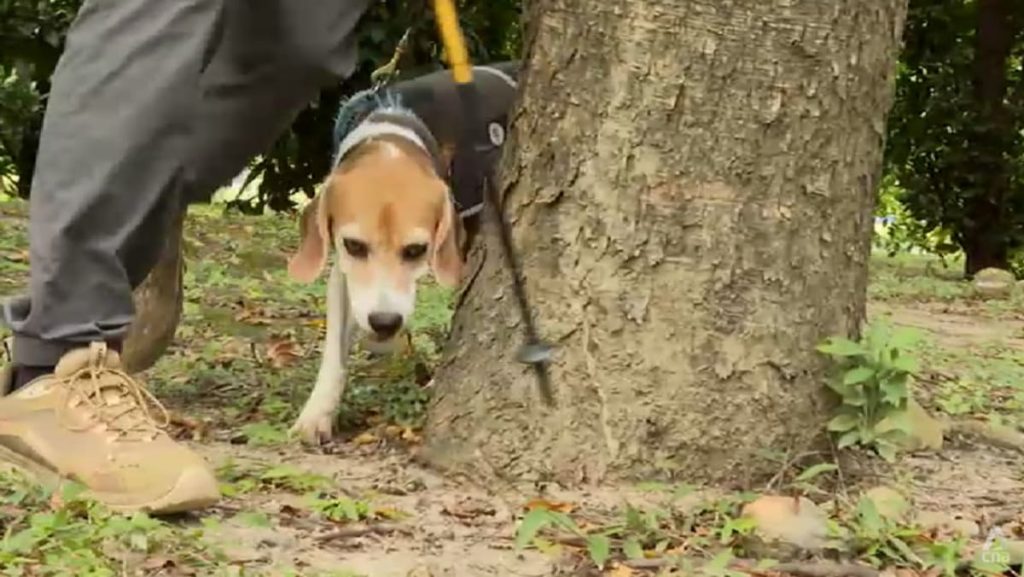Canine units are increasingly being recognized for their invaluable contribution to urban safety, extending beyond their traditional roles in law enforcement. One remarkable application of their exceptional olfactory abilities lies in safeguarding the urban forest, a vital component of any city’s ecosystem. Highly trained sniffer dogs, like Lucy, are demonstrating remarkable proficiency in detecting tree diseases, often at early stages invisible to the human eye, thereby preventing widespread infestations and preserving the health and beauty of urban green spaces. This proactive approach not only saves trees but also significantly reduces the financial burden of large-scale tree removal and replacement, while simultaneously contributing to a healthier and more aesthetically pleasing urban environment.
The process of training these canine disease detectors is a testament to the dogs’ intelligence and adaptability. Selected for their keen sense of smell, focus, and gentle temperament, these dogs undergo rigorous training regimens. They are taught to associate specific scents, often volatile organic compounds (VOCs) released by diseased trees, with a reward system. This positive reinforcement encourages the dogs to actively seek out and pinpoint the source of the target scent. Over time, the dogs develop an extraordinary ability to discriminate between the complex array of smells present in the urban environment, zeroing in on the specific VOC signatures of various tree diseases. The training also emphasizes clear communication between the dog and the handler, ensuring that the dog’s subtle signals, such as sitting next to a diseased tree, are accurately interpreted.
The implementation of canine disease detection programs offers numerous advantages over traditional methods of tree assessment. Visual inspections, often reliant on observable symptoms, are frequently inadequate for early disease detection. By the time visible signs appear, the disease may have already progressed significantly, potentially jeopardizing the tree’s survival and spreading to neighboring trees. Laboratory analyses, while accurate, are time-consuming and expensive, making them impractical for large-scale screening. Canine detection, on the other hand, provides a rapid, cost-effective, and non-invasive method for surveying large numbers of trees. The dogs’ mobility allows them to navigate diverse terrains, reaching trees that might be inaccessible to human inspectors. Their remarkable olfactory sensitivity enables them to detect minute traces of disease-related VOCs, often long before any visible symptoms manifest.
The collaborative nature of canine disease detection further enhances its effectiveness. Typically, a suspected diseased tree is assessed by at least two dogs, ensuring a higher degree of accuracy and minimizing the risk of false positives. This double-checking protocol adds another layer of reliability to the process, bolstering confidence in the diagnosis. If both dogs independently identify the same tree as potentially diseased, it triggers further investigation and appropriate intervention strategies. This collaborative approach, combining the dogs’ exceptional sensory abilities with human expertise in tree pathology, provides a comprehensive and efficient system for managing urban tree health.
The impact of canine disease detection extends beyond the immediate preservation of individual trees. By identifying and addressing disease outbreaks early, these programs contribute to the overall health and resilience of the urban forest. A healthy urban forest provides numerous ecological, social, and economic benefits. Trees improve air quality by absorbing pollutants, mitigate the urban heat island effect, provide habitat for wildlife, and enhance the aesthetic appeal of the urban landscape. By protecting these invaluable resources, canine disease detection programs play a crucial role in creating healthier, more sustainable, and more vibrant urban environments.
The success of programs like the one in Taipei, where Lucy and her team inspect thousands of trees annually, highlights the potential of canine disease detection to revolutionize urban forestry management. As cities around the world face increasing challenges related to climate change, urbanization, and pest infestations, the role of these highly skilled canine units becomes even more critical. Their ability to rapidly and accurately identify diseased trees allows for timely intervention, preventing widespread outbreaks and preserving the invaluable ecological, social, and economic benefits provided by healthy urban forests. The dedication and remarkable abilities of these canine partners are proving instrumental in ensuring the long-term health and sustainability of our urban ecosystems.

